John & Fanny Smith and their son Edwin, Missionaries
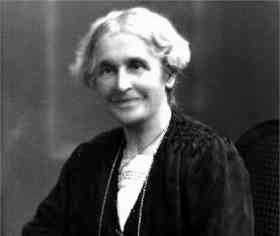
Fanny Elizabeth Jeary (1852-1934)
Fanny Jeary came from the well-known family of Martham butchers that many people interested in the history of Martham will be familiar with. You can read more about the family by clicking HERE. Fanny was one of ten children and at first glance appears no different from any other young girl growing up in the village. But she went on to marry the Methodist Missionary Reverend John Smith and as Missionaries they spent many years working in Africa. Reverend Smith gained fame for his work but their son Edwin surpassed even his father’s achievement and became world famous as a Missionary, interpreter and anthropologist. This then is the story of Fanny Jeary, her husband and her son.
Fanny Elizabeth JEARY was born on 30th December 1852 at Martham as the third child of John JEARY & Sarah Elizabeth, nee BRADDOCK. She had nine siblings, namely: Amelia Millicent, Ann Elizabeth, Jannie, John Edwin, Clara, George John William, Arthur Thomas, Emma Eliza, and Herbert Wilson. She grew up at the home of her parents at Back Lane, Martham. Her father was a butcher and the wider family were well known in Martham as butchers.
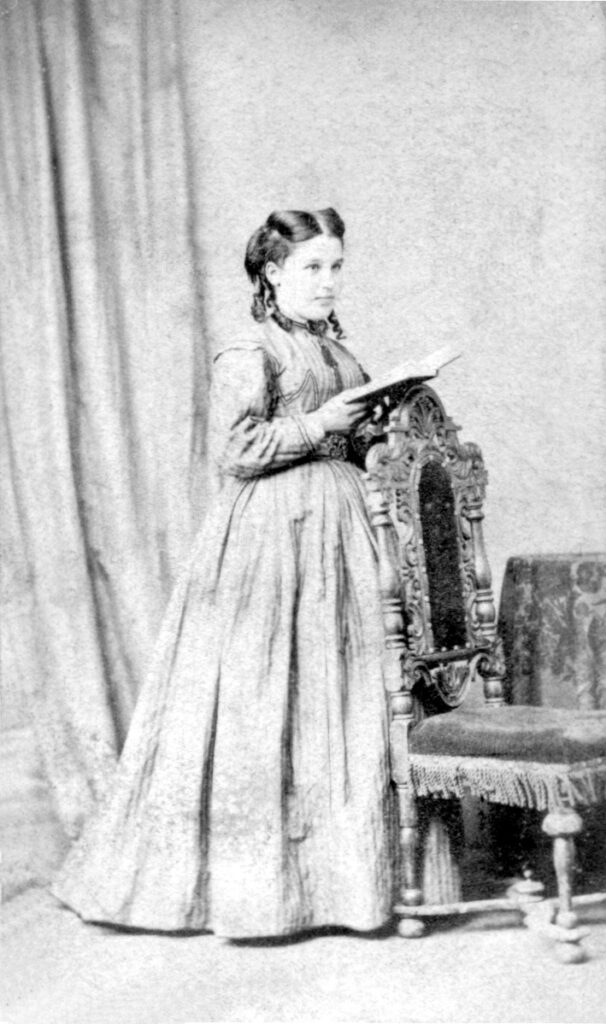
Fanny grew up at the family home called Ivy Holme on Back Lane where she was listed in the 1861 and 1871 census returns. When she was 21, she married Reverend John SMITH on 7th April 1874 at the Primitive Methodist Chapel, Catfield, Norfolk – shown right – and together they had the following children:
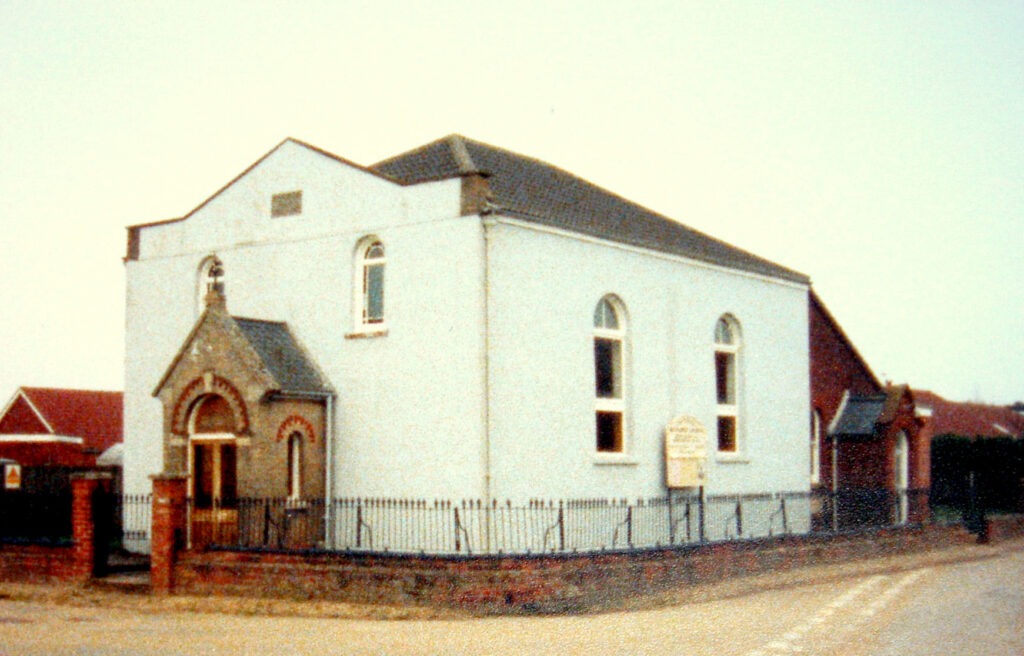
- Letitia Gertrude SMITH was born on 27th November 1875 at Aliwal North, South Africa. She died in 1877 in Aliwal North.
- Edwin William SMITH was born on 7th September 1876 at Aliwal North. See more about him below.
- Stanley Harold SMITH was born on 5th December 1879 at 16 Maddeys Terrace, Nelson Road North, Great Yarmouth. He married Florence Matilda ARGENT on 5th August 1901 at Saint Mary Magdalene, Holloway Road, Islington, London. They emigrated and he died on 5th October 1962 at Colonel Belcher Hospital, Calgary, Alberta, Canada.
- Frederick Robertson SMITH was born in 1882 at King’s Lynn, Norfolk.
- Baby SMITH was born in 1883 in Aliwal North and died the same year at Aliwal North.
- Baldwin Sydney SMITH was born on 24th June 1884 at Aliwal North. He died on 18th October 1916 in France; missing in Action WW1.
- Arnold Morley SMITH was born about 1886 at Aliwal North.
- Dorothy Kate SMITH was born on 12th February 1893 at Luton, Bedfordshire. She died on 25th March 1915 at Coventry, Warwickshire, England.
Fanny & John were listed in the census of 1881 living at 46 Railway Road, King’s Lynn, Norfolk. Edwin and Stanley were living with them and they had a servant. The couple were counted in the census in 1891 living at 10 Paget Road, Great Yarmouth. Their sons Stanley, Frederick and Arnold were there. They also had a live-in servant. At the time of the 1901 census they lived at 16 Stracey Road, Norwich with son Arnold and daughter Dorothy. They also had a servant.
By 1911 Fanny lived with her nephew, Wilfred Waters at Norwich Road, Blofield. Oddly the census form said she was married which had been crossed out and changed to widow (which she was not as her husband was alive and living at Enfield, Middx). The form also said she had been married for 37 years and had 8 children, 6 of which were alive. This was correct but conflicted with the number her husband had listed as six on his form. She was listed as being a worker, domestic housekeeper. Her mother, Sarah, also lived there.
Fanny’s husband, John, is thought to have died in 1915 at Coventry, Warwickshire although I cannot find an exact record for his death and he did not leave a will. His death date is a little uncertain with John Smith being such a common name.
In 1921 Fanny lived with her married son Frederick at 3 Regent Street, Coventry, Warwickshire. She was 68. She died on 4th January 1934 at Coventry, Warwickshire and is buried at London Road Cemetery, Coventry.
Fanny & John had two spells living and working in South Africa – from 1874 to 1879 and from 1883 to 1888. Their children Letitia and Edwin were born there in 1875 & 1876 respectively but Stanley was born in Great Yarmouth in December 1879. In 1881 they lived in King’s Lynn. Their son Frederick was born in 1882 at King’s Lynn. There was a baby born in South Africa in 1883 that died un-named at birth. Baldwin & Arnold were also born in South Africa in 1884 & 1886 but by 1891 the family lived in Great Yarmouth.
Throughout their tours of duty in South Africa Fanny fully supported her energetic husband with his missionary work. Her life was tough with long exploration of remote South Africa on foot and faced with the continuous danger of disease and attack from animals and not always friendly natives. You can read more about her life via her husband’s work outlined below.
Reverend John Smith (1840-1915)
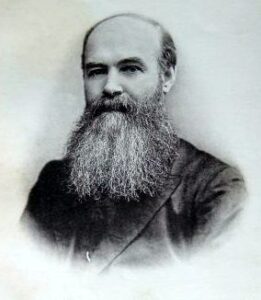
John Smith was born on 9th February 1840 at Holme in Huntingdonshire, England. He grew up to become a Minster and Missionary for the Primitive Methodist Church of England and spent several years in South Africa. He married Fanny Elizabeth Jeary from Martham, Norfolk. They married on 7th April 1874 at the Primitive Methodist Chapel at Catfield, Norfolk and went on to have eight children, five of whom were born in South Africa. Records show that his first African ministry was at Aliwal North, Cape Province, South Africa although there is strong evidence that he was also in Pietermarzitburg prior to Aliwal North. Methodist Church Records show he carried out his first baptism at Christ Church, Aliwal North on 23rd August 1874. He was there for that stay until 24th April 1879 (last baptism). He returned to Aliwal North, as evidenced by his first baptism, on 1st July 1883 and was there until at least 26th February 1888 based on his last baptism in South Africa.
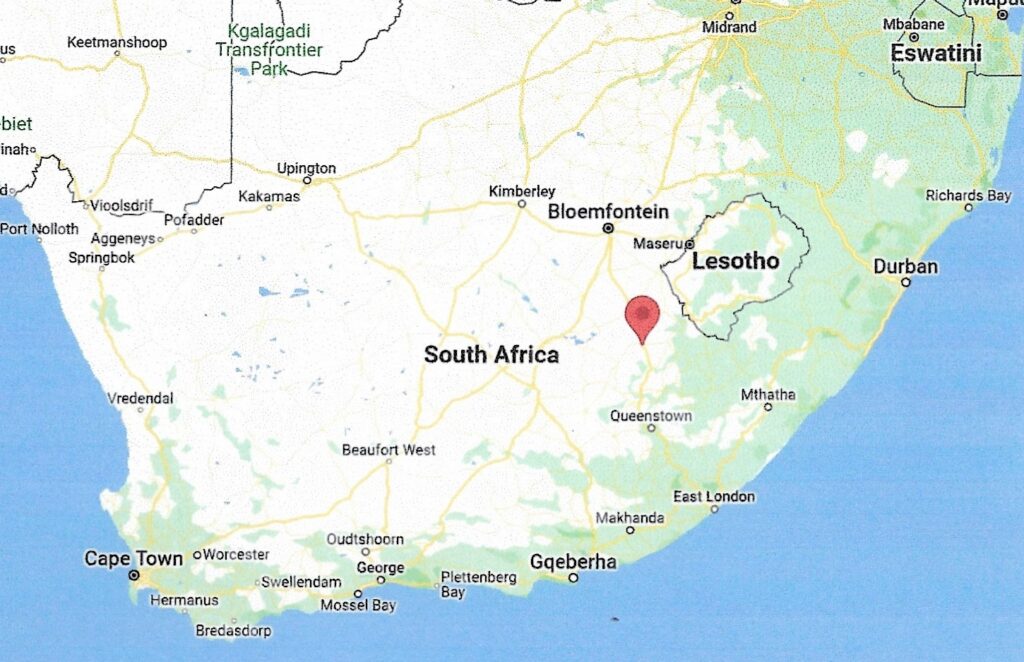
Aliwal North is indicated by the red pin. Map courtesy of Google.
While in England John & Fanny preached at the Great Yarmouth Primitive Methodist Church for the periods 1862 – 1865, 1872 – 1874, 1879 – 1880 and 1888 – 1891. Reverend Smith was a widower when he married Fanny having previously been married to Susan Collen at Soham, Cambridgeshire in 1863. They had three children together; Julia in 1864 and Georgiana in 1865 in England and John who was born in South Africa in 1868. Susan died aged only 27 in 1873.
John & Fanny had three children while on their first stay in Aliwal North, Letitia Gertrude (1875-1877); Edwin William (1876-1957) & Frederick Robertson (born in 1882). During their second stay in Aliwal North they had two other sons, Baldwin Sydney (1884-1916) & Arnold Morley in 1886. They also had an un-named baby who died at birth in 1883.
There are examples in the records at Christ Church, Aliwal North of the signatures of John & Fanny and he was instrumental in improving Christ Church Temple building.
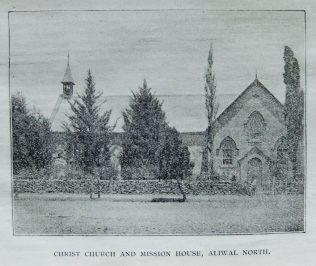
We get an interesting glimpse into the early life of Rev. Smith and working conditions of a Minister from his own words when he addressed a large audience at the Great Yarmouth Primitive Methodist Temple in February 1890 when he celebrated his 50th birthday and where he preached at various times over many years. He gave a personal account of his life. He was born of poor but respectable parents in Huntingdonshire as the third of twelve children, all of whom at one time had to be maintained on a miserable pittance of ten shillings a week, his father’s weekly wage. At the age of six he went to work in the fields scaring crows and looking after sheep. When only nine he was put out to service and in October 1854 came to Norfolk residing at Welney, near Downham working on a farm where he was first influenced by the Methodist movement. At eighteen, he left agricultural work and became a Primitive Methodist Minister. Stationed at Aylsham, he received the lowly salary of £24 a year – eight pounds less than he received as an agricultural labourer, of which £3 went to the Preachers’ Itinerant Fund. Amongst the various places at which he was subsequently stationed up to the time of the opening of Yarmouth Methodist Temple on 6th April 1874 and preceding his departure to Africa, he mentioned Colchester, Briston and Dereham. With the sum of £200, subscribed by the members of the Circuit, he travelled to Africa and settled on the banks of the Orange River at Aliwal North, where he spent five years of unremitting toil. Further facts relating to the Methodist cause at Aliwal North and his return to England was recounted in detail. Great Yarmouth Councillor Mr. T. W. Swindell briefly summed up Rev. Smith as an earnest, zealous, energetic Christian, untiring in his endeavors to promote the extension of Christian Principles at home and abroad and one who took a keen interest in the social conditions of the African people.
Rev. Smith’s active ministry embraced 48 years. He retired in 1907 but even in the eight years following his retirement from the active ministry he took little rest. His services for the Bible Society in Enfield and Stoke Newington Circuits (both in North London) and in various other parts of the country proved how much he retained his capacity for work and his passion for preaching. It was said of him that he had the instincts of a peasant and the dignity of a peer, the passion of a student and the good judgement of a statesman, the memories of a ploughboy and the culture of a university, the great heartedness of the missionary and the concentration of a pastor. Rev. Smith died on 12th February 1915.
Edwin William Smith 1876-1957
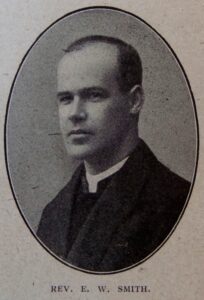
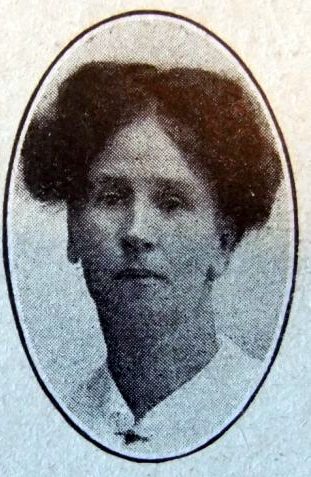
Left: Rev. Edwin Smith. Right: Julia Fitch
Edwin William Smith (widely known as Ted) was born on 7th September 1876 at Aliwal North, South Africa to Primitive Methodist Missionaries John & Fanny Smith. He received his education in England at Elmfield College, York. As a young man he showed few signs of academic prowess but in his spare time he roamed through his father’s large library making himself familiar with progressive writers. This reading set the foundation of his faith, but a local minister led him to view Christianity pragmatically, “as a life to be lived.” He also read books about the exploration of Africa and as his longing to return to his birth place increased, he realised in 1895 that there was an opportunity for service as a Bible translator in a new mission among the Ila people of central Africa. He learned Greek at Birkbeck College and spent a year acquiring basic medical skills at Livingstone College in London’s East End. He was accepted for the Ministry in 1897 and in 1898 returned to Africa and spent a few months in Lesotho with the Paris Evangelical Mission where he was inspired to study Bantu languages and cultures.
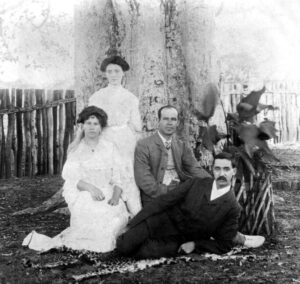
Edwin and his fiancée, Julia Fitch, a teacher, were married at Cape Town on the same day that Julia arrived in South Africa on 3rd October 1899. They intended to leave for central Africa in 1900 but they were delayed for almost two years because of the tense political situation of 1899, which led to the Second Anglo-Boer War. Consequently, they were kept at Aliwal North until 1902. Edwin ministered in the Primitive Methodist circuit, continued his language studies and acquired practical skills in the mission workshops. During their delay at Aliwal North they had their first child, a boy, to whom Julia referred in her book “Sunshine and Shade in Central Africa” as “Baby” or “Laddie” and never by name. His name was Thabo. When he was about 10 months old he contracted measles and while he seemed to recuperate he developed a fever and died, probably from meningitis.
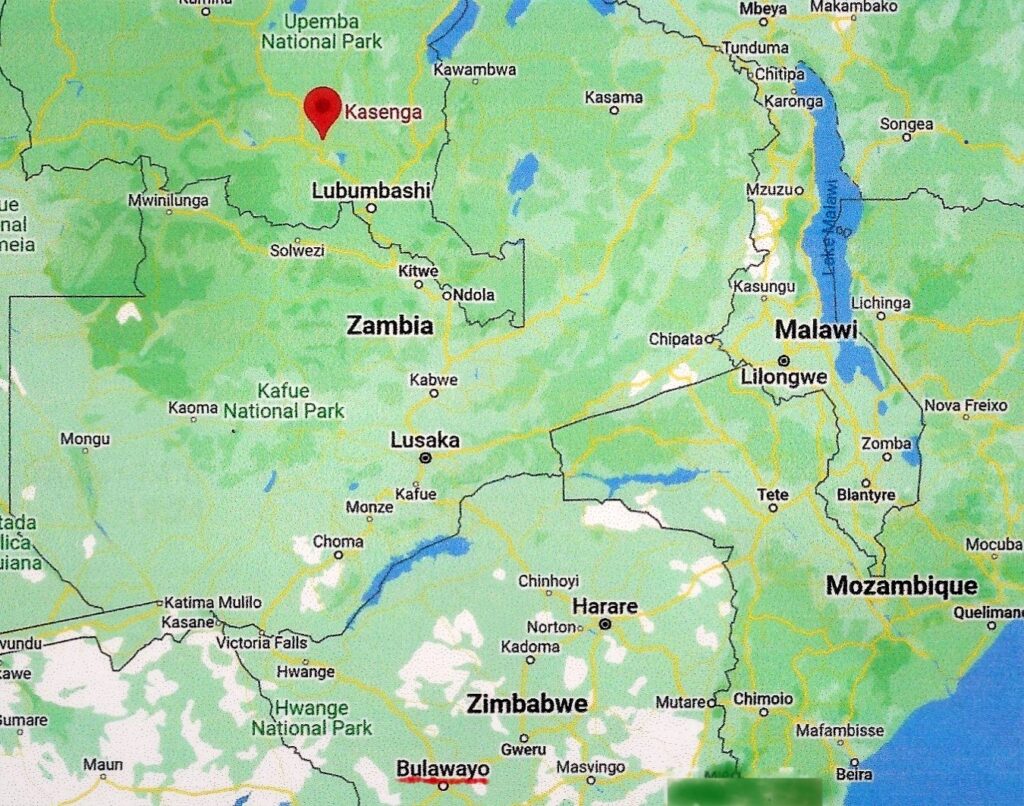
Bulawayo to Kasenga is 600 miles (960km) – a tough walk taking around two months. Map courtesy of Google
In January 1902 Edwin & Julia left Bulawayo, Rhodesia on a very difficult 400-mile ox wagon trip to the Zambezi River at the Northern Rhodesia (Zambia) border, followed by a 200 mile walk to the mission at Nanzela. The Mission, which had been closed for some time was in significant disrepair and they had to almost rebuild it from scratch including making their own bricks out of the only available “clay” – white ant or termite nests. The walls were 18 inches thick and the roof was thatched. Two of the rooms, the bedroom and the sitting room were mosquito proof but none of the rooms were barriers to most of the insects and snakes that frequented the area of the Mission. The construction was done by locals who were of the Ba-Ila Tribe. In the following years Edwin learned the Ila language and prepared an Ila language dictionary and translated portions on the Bible and other books into Ila which greatly improved the education and conversion of the local people. In about 1905 Edwin & Julia had their second child, a girl, who was named by the locals as “Matsediso”. They remained at the Mission until 1907 and lived for at time at Kasenga, Northern Rhodesia (Zambia).
After a two-year furlough in England they returned to Zambia in 1909 and opened a new Mission in the heart of Ila country at Kasenga. Edwin did more building – a school, two houses and other buildings – and continued his Ila New Testament translation; by the end of his term of service in 1915, his translation of the New Testament had been completed. During these years, realising that language has to be understood in its cultural context, he made anthropological studies of the Ila people.
They returned home to England in 1915 and Edwin served for a year as an Army Chaplain to the Forces in France on the Western Front. Ill health forced him out of the army in 1916. His experiences and reflections in Africa laid the foundations for his participation in several aspects of African studies over the next forty years. As he had fundamental disagreements with his mission’s policies, he did not return to Africa. However, the British and Foreign Bible Society (BFBS), an interdenominational organization, seconded him to work as its agent for Italy. After five years in Rome he returned to Britain as secretary for western Europe but was soon transferred to the BFBS Bible House to take charge of the society’s literature. From 1923 to 1932 he published reports and edited magazines for adults and children. Then in 1932 he was given responsibility for Bible translation as editorial superintendent. Translation had been his chief missionary interest and as well as being a translator, he had written a splendid book entitled The Shrine of a People’s Soul (1929), in which he drew on his own experiences in Africa and anthropological insights. Before retiring from the Bible Society, Smith toured India (1938-39) to assess the need for new or revised versions of the bible.
After retirement he and his wife moved, in about 1940, to the United States where Edwin was Visiting Professor at Hartford Seminary Foundation and later at Fisk University in Nashville, Tennessee.
After their return to England from America they moved to a house they called “Kasenga” on Stanley Avenue, Chesham, Berkshire, most likely named after the town in Northern Rhodesia. Then they moved to Deal on the south east coast of Kent to be closer to Matsi who lived about four miles away near Dover. Their new address at that time was “The Old Watch House, The Marina, Deal, Kent”. This house still stands on Front Street overlooking the Straits of Dover and was where Julia died in 1952. Edwin also died there on 23rd December 1957. His death was celebrated with several obituaries that outlined his great contribution as a Missionary, interpreter and anthropologist. These are some of the qualities described in the obituaries:
- Africa was his lifelong passion. He loved and respected the African people and all his great gifts were devoted to them.
- He wrote more than twenty books, all of which had some bearing on Africa. His “Ila-Speaking Peoples” was a milestone in African anthropology.
- His Hartley Lecture, “The Golden Stool”, became a textbook for colonial administrators and his “Aggrey of Africa” also had a wide influence.
- He won international recognition as an anthropologist.
- He was for two years President of the Royal Anthropological Institute, was Myers Lecturer and awarded its Pitt Rivers Memorial Medal. It was a particular satisfaction to him that he was the first Missionary to receive these distinctions.
- He was honoured by the Royal Africa Society with its silver medal ‘for Distinguished Service to Africa’.
- He was one of the founders of the International African Institute and a valued member of its council.
- The degree of Doctor of Divinity was deservedly conferred on him by Toronto University.
- He was cast in a large mould. His native abilities were remarkable, for he achieved his acknowledged scholarship with scarcely any academic training.
- His industry was enormous; he was thorough in all he undertook.
- He read widely and in many languages.
- It was his supreme joy to serve the Church and Kingdom of Christ and he never surrendered his missionary vocation.
- With all his attainments he remained essentially humble minded and he was of a most generous and sympathetic spirit.
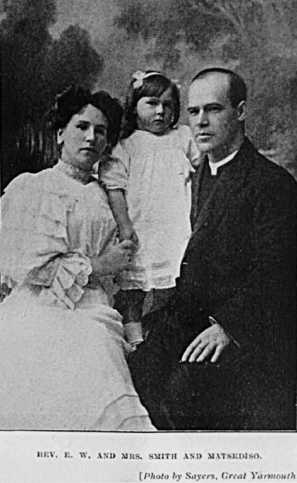
Edwin & Julia Smith with their daughter Kathleen Matsediso known as Matsi.
Sources:
My thanks to Jim Tilbe for his considerable help and knowledge of his own ancestors.
John Bibby re: Elmfield College, York connection.
www.myprimitivemethodists.org.uk a brilliant community archive well worth browsing.